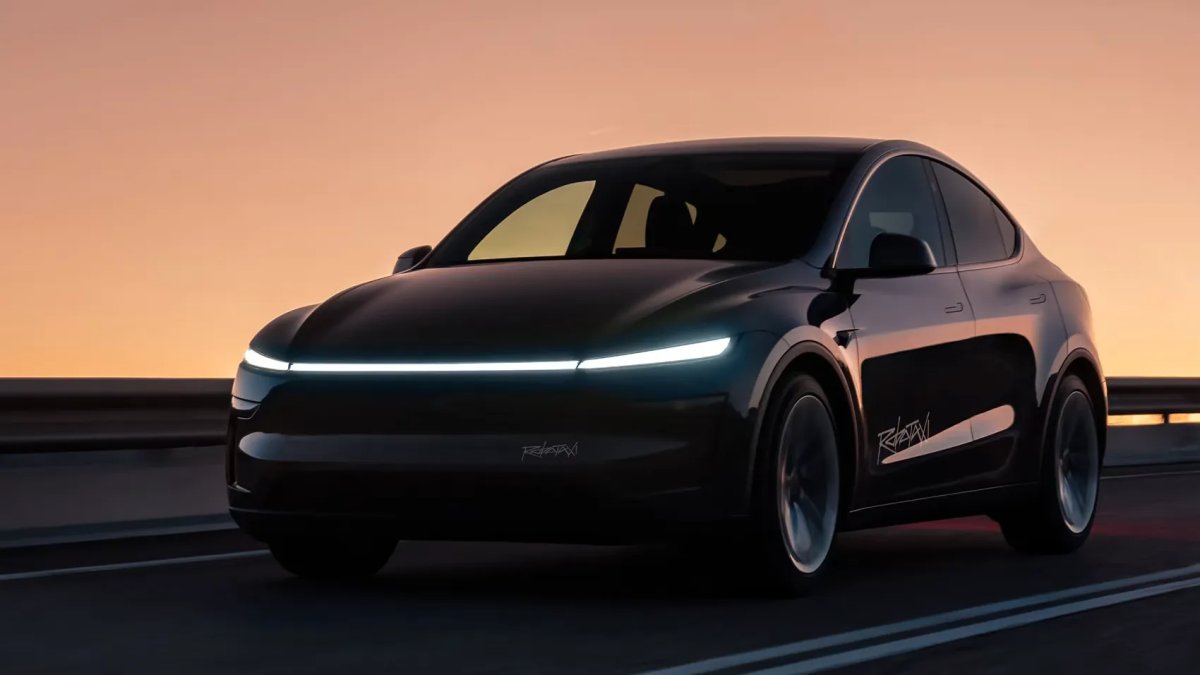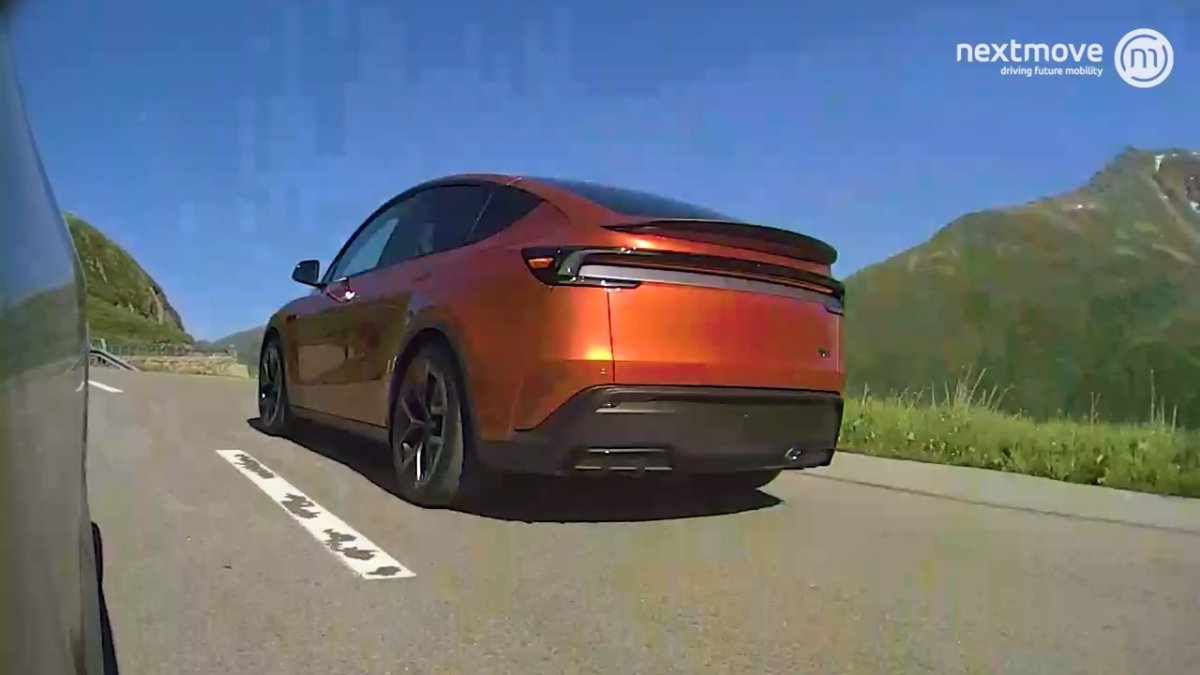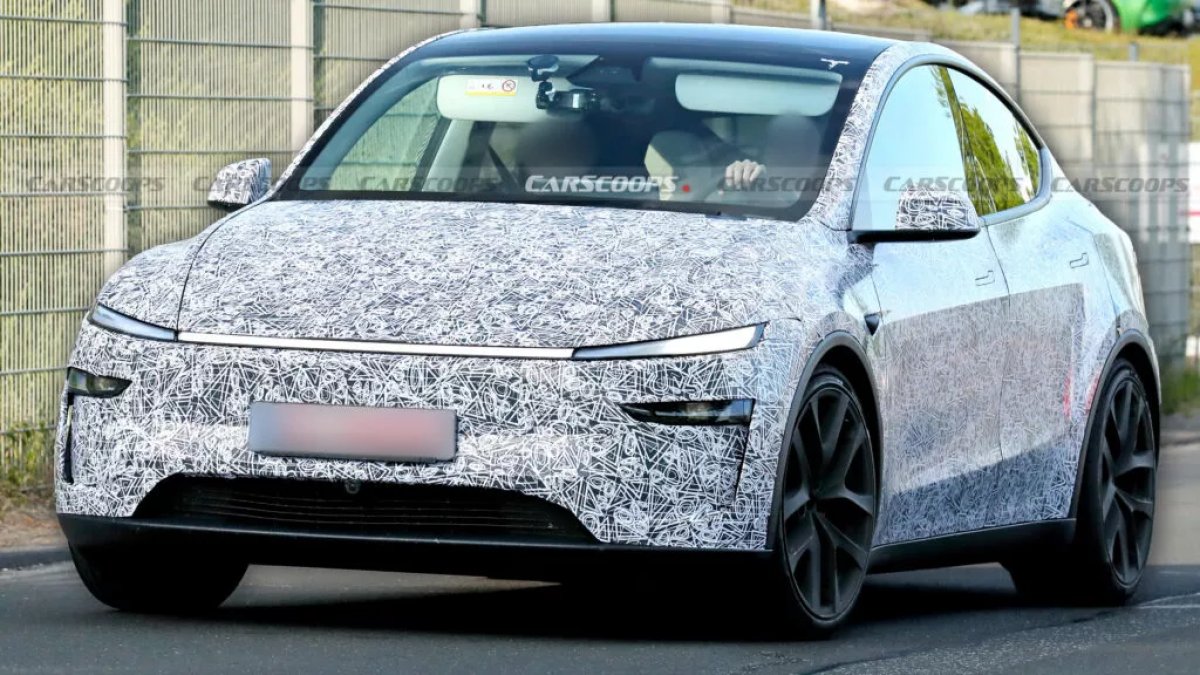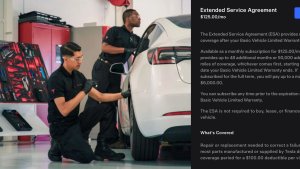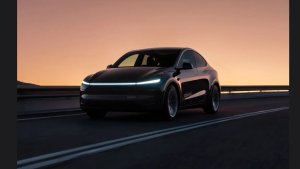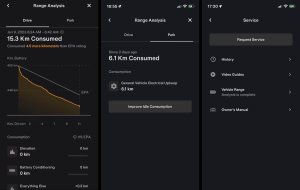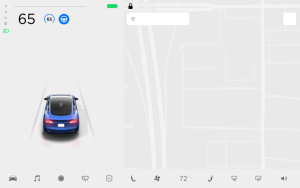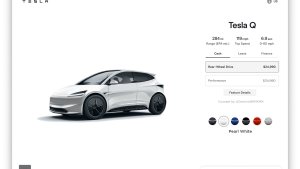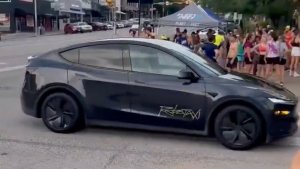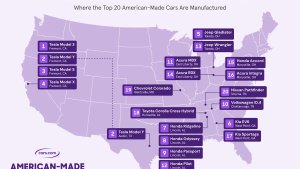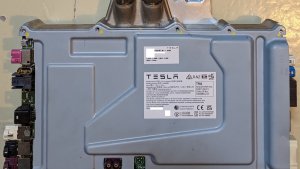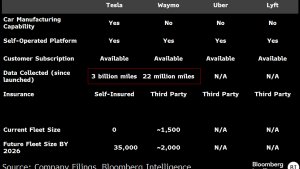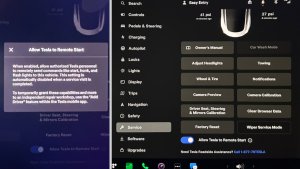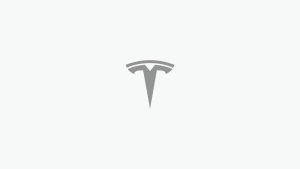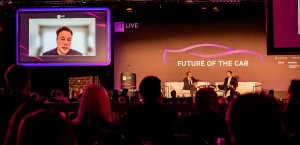Tesla Introduces New Dynamic Supercharger Pricing
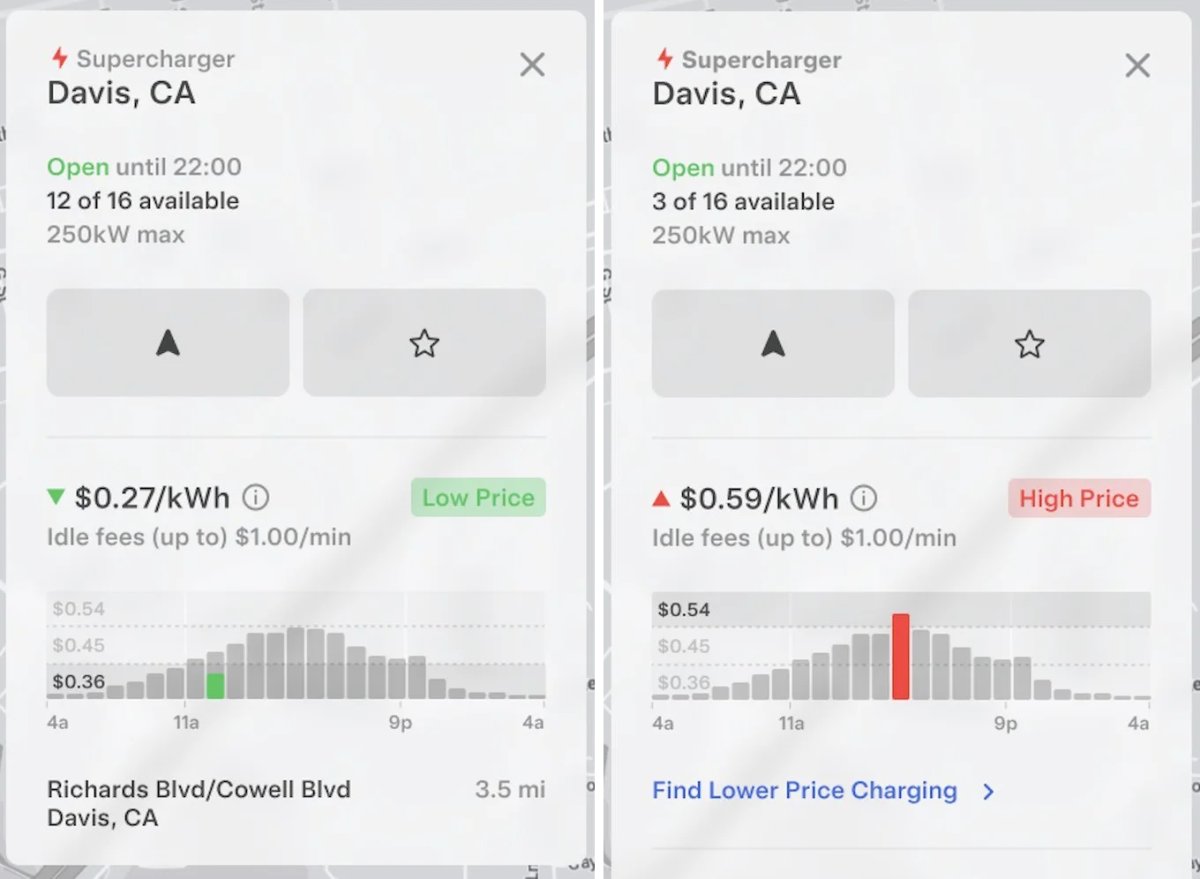
Tesla is adjusting its Supercharger prices based on current usage in a new pilot program. Tesla’s pricing structure has typically revolved around traditional time-based peak/off-peak schedules but is now migrating to a more dynamic model based on live Supercharger utilization.
This development, announced officially through the Tesla Charging X account, should make Supercharger pricing more accurately reflect the demand for the specific Supercharger site instead of basing pricing on past usage.
Live Utilization Pricing
The core of this new pilot will launch at just 10 Supercharger sites in North America. The particular sites in question have not been clarified, but one of the locations is the Supercharger located in Davis, California.
Tesla intends to expand the pilot based on feedback and the success of the initial rollout. We could be looking at the future of Supercharger pricing around the globe.
New Chart and Features
Today, Tesla typically offers two or three prices based on peak and off-peak demand, meaning that Supercharger prices are based on the hour of the day. The current Supercharger chart in the vehicle shows the hours and price on the X-axis, while the Y-axis is the typical demand (image below).
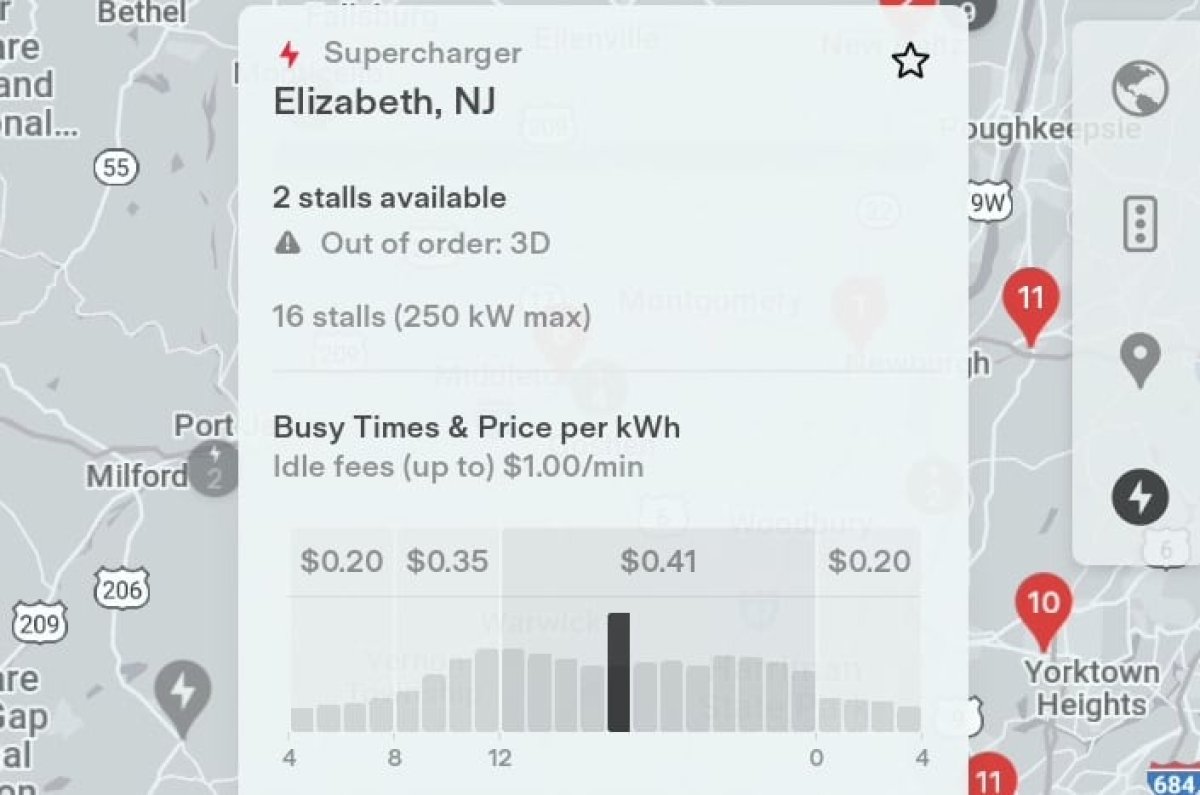
However, with the new charts that will soon be added to vehicles, Tesla will display the time on the X-axis, and the Y-axis will show the historical demand and the current price (photo at the top of this page).
In theory, the Supercharger's historical demand and real-time usage should be pretty similar, but there will be exceptions, like holidays and other events. Unexpected high and low usage will play a role in the pricing, such as sporting events and natural disasters. If the Supercharger is busy, then pricing will be high; otherwise, it will be low.
This also introduces a new feature, since pricing is now based on actual demand, users could navigate to a Supercharger that is less busy and, therefore, cheaper. In the hero image, we can see that Tesla will add a new “Find Lower Price Charging” button in a future vehicle update. This will likely highlight other nearby Superchargers that are less busy and less expensive.
However, it seems like Tesla may also start charging more for Superchargers than they do today when they’re extremely busy. Judging by the screenshot Tesla shared, the estimated usage never passed the $0.45 per kWh at the Davis, CA Supercharger. However, it seems that there’s a new price of $0.54 per kWh when the Supercharger usage is at its peak.
The good news is that Tesla is being more transparent and indicating whether the price is low or high with new labels. This change will give users more choices in terms of charging prices. If you want to save a few bucks, you can drive to a less busy Supercharger. The price will also be based on actual usage, which seems like a fairer way to determine price.
While Tesla hasn’t updated vehicles yet to show these new charts, the latest version of the Tesla app already incorporates the changes.
What Tesla Says
Max de Zegher, Tesla’s Director of Charging, elaborated on the pilot program on X.
He points out that Tesla Charging’s rates have been consistent, and it has focused on improving the charging experience and availability. Off-peak and on-peak pricing will help to increase both of these.
Tesla has outlined exactly how this new live feedback loop will function. The more accurate real-time station demand can allow Tesla to adjust pricing if a station is experiencing congestion during traditionally “off-peak” hours. On the flipside, if a station is unusually empty, Tesla can reduce the pricing.
This easily incentivizes customers who are keeping an eye on charging costs, as changing your charging destination can be as simple as the tap of a button. Most interestingly, Tesla says that the average price paid by customers is expected to remain the same as with the previous time-based system, even with seasonal and real-time fluctuations.
Crucially, owners can always see the price per kWh on their vehicle’s primary display, as well as in the Tesla app before initiating a charging session. Additionally, Tesla will not change the pricing mid-charge, so there’s no need to worry about it fluctuating up or down while you’re charging.
When reading some of our old blog posts, you'll find that @TeslaCharging has been consistent in its pricing principles: improving the charging experience and Supercharger availability. True to those principles, we're now piloting live site utilization for off-peak and on-peak… https://t.co/rIqQzOZfcG
— Max (@MdeZegher) May 6, 2025
Supercharger Pricing History
This move to live-based pricing is being presented as Tesla’s latest step towards managing its vast charging network with a more customer-centric approach. Tesla has had some historical progression in its pricing strategy, so let’s take a look at where we were versus where we are going.
kWh-Based Billing: Tesla has long pushed for billing by the kilowatt-hour (kWh) as the fairest method for customers to pay for the exact energy consumed, avoiding session fees that can obscure actual energy costs. This is now standard in most regions, but it wasn’t too long ago that pricing was determined by the minute.
Idle Fees (2017): To address vehicles remaining plugged in after charging was complete at busy sites, idle fees were implemented to improve stall availability – a practice now common across the industry.
80% SoC Limiter (2019): At busy locations, Tesla introduced an automatic 80% state-of-charge (SoC) charging limit (which users can manually override) to encourage faster turnover, as the final 20% of charging is significantly slower.
Time-Based Peak/Off-Peak Pricing (2020): Pricing based on estimated busy times was rolled out to incentivize charging during less congested periods, helping to distribute demand and manage costs.
Congestion Fees (2023): At particularly busy sites, congestion fees were introduced. These combine the principles of idle fees with disincentivizing charging to a very high state of charge when a station is crowded, with the stated goal of improving availability, not generating profit.
Commitment to Affordability
Alongside these pricing changes, Tesla has reiterated its focus on keeping Supercharging affordable for all its users. Tesla points out that, on average, in North America and Europe, Tesla’s Superchargers are 30% cheaper than other fast-charging options while also being far more reliable.
Beyond that, 2025 is set to be Tesla’s largest year for expanding the Supercharger network while also replacing many older V2 charging sites with faster, more capable V4 Supercharger stations.











